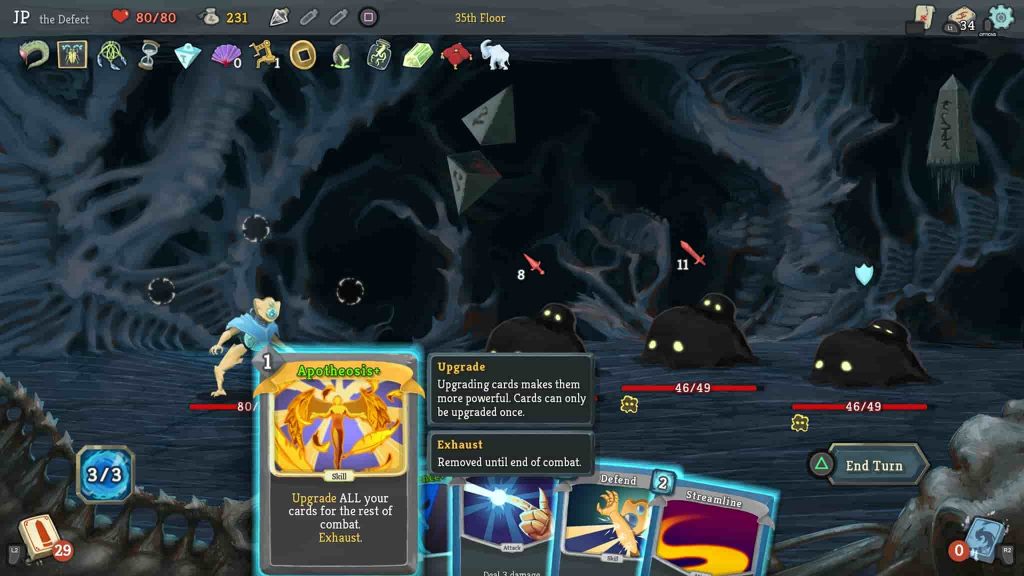

Just before throwing in the towel, I realized Slay the Spire evolved past the collectible card games weaponized against me in elementary school. With each defeat I pictured Michael’s smug, self-satisfied grin and the Cheetos-dusted fingers that so regularly tormented my childhood. Their seemingly unstoppable attacks called back to Michael’s meticulously-crafted decks of cards.

Slay the Spire’s quirky enemies had the same endless luck as Michael when he pulled from booster packs. Intrusive flashbacks to playing Pokémon and Yu-Gi-Oh! at the elementary school lunch table pervaded my mind. Starting Slay the Spire on my Nintendo Switch reminded me why I abandoned deck-building as a form of gratification in the first place. That essentially amounts to Michael from elementary school under a different name. Ultimately, you want to draft a perfectly synergized deck to reach and defeat the spire’s heart. Players improve their decks at the battle’s conclusion by selecting one of three random card options. They can block, attack, or activate special abilities.
SLAY THE SPIRE STRATEGY HOW TO
Based on the enemy’s intent, they choose how to best spend their limited energy pool. When combat starts, players draw a selection of cards. The characters climb up a randomly generated tower flush with enemies, treasure, and mystery encounters. Each comes with their own specific card pool. He was the kid in elementary school I could never beat at trading card games.Īt the start of each play-through, hopeful spire slayers choose one of four characters. Ultimately, though, I was humbled by a seemingly-unassailable foe, an unwelcome reminder of the villain from my youth: Michael. MegaCrit’s revolutionary rogue-like title turned out to be the perfect scratch for that regressive itch.

My abandoned form of gratification manifested in a sudden craving to flex my strategic supremacy in a deck-building game. This makes Slay the Spire an ideal 2020 companion. During stressful times, people return to abandoned forms of gratification to cope.


 0 kommentar(er)
0 kommentar(er)
